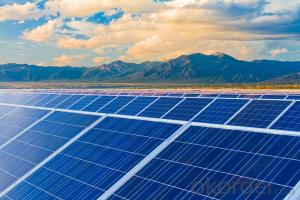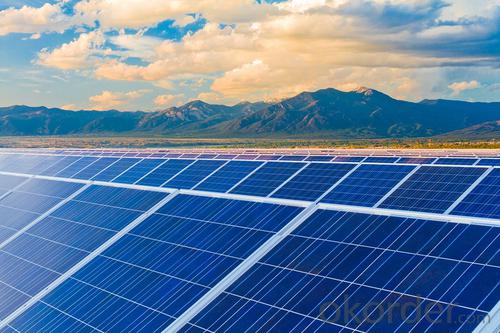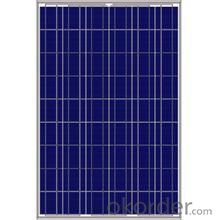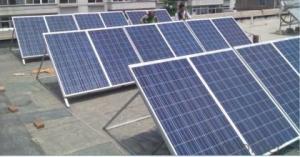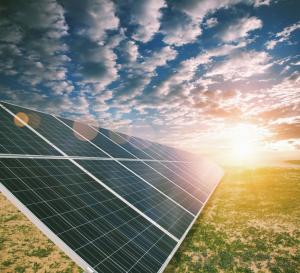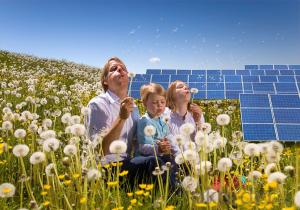Arizona Solar Panels - HBM(240) Polycrystalline Silicon Solar Panels
- Loading Port:
- Tianjin
- Payment Terms:
- TT OR LC
- Min Order Qty:
- 200000 watt
- Supply Capability:
- 20000000 watt/month
OKorder Service Pledge
OKorder Financial Service
You Might Also Like
About us
We have been engaged in PV manufacture and research industry for more than 20 years. We also own powerful technical resources and experienced research team in Hope Group.
We have the first class manufacture equipments and plant.Hope Group are qualified for many international and national authentications of TUV、IEC61215、IEC61730、CE and “ Golden Sun” in China PV industry, meanwhile ISO9001-2008, ISO14000, OHSAS18000, REDP and the certification of Hi-tech enterprise etc./ ( NDRC/GEF/WB-be selected in Chinese renewable energy development projects).
Our national sales service covers seven parts, including northeast, north, east, middle, south, northwest and southwest, international sales covers five continents and over forty countries, including Germany, Italy, Spain, France, America and Brazil etc. There is high efficient , specialized and experienced management team in Hope Group.
Our present annual capacity is 6 million for wafer, 60MWp for solar cells,200MWp for solar modules and one hundred thousand for solar applications. It is expected that the annual capacity of 2012 will be up to 30 million for wafer, 300MWp for solar cells, 1000MW for solar modules and 2 million for solar applications.
Data sheet
| Maximum Power | 240W |
| Efficiency | 0.148 |
| Backsheet | Silver |
| Frame Color | White |
| Manufacture Site | China |
| Frame | Anodized Aluminum Alloy |
| Weight | 19KG |
Solar cell module production process
Line called packaging line components, packaging is the production of solar cells a key step in the packaging process without a good, multi-well battery is also not a good component of production boards. Battery package not only the battery life is guaranteed, but also to enhance the combat strength of the battery. Product quality and high service life is to win can be the key to customer satisfaction, so the quality of components of the package board is very important.
FAQ:
1. How long will my inquiry get response?
Your inquiry related to our products or prices will be replied within 24 hours.
2. Can I get professional service and suggestion?
Well-trained and experienced staffs to answer all your questions in fluent English.
3. Do you accept OEM or customized design?
OEM & ODM, any your customized lightings we can help you to design and put into product.
4. What if I need specific design?
Distributorship are offered for your unique design and some our current models.
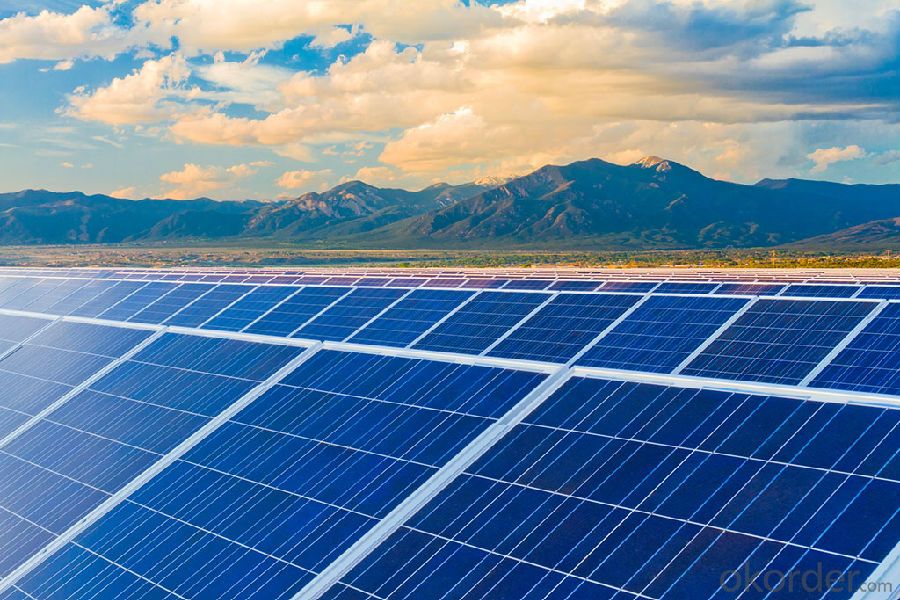
- Q: I am trying to built a circuit that will power two USB ports (both 5V and 0.5 amps) from the output of a solar panel that produces 20V at 0.2 amps. I have a voltage regulator that runs at 5v and 0.5 amps but I can't figure out the best way to boost the current up to 0.5 amps before I incorporate the voltage regulators.
- The previous answer about wattage is correct, so this is your first problem. Try increasing the number of solar panels by connecting them in parallel. To answer your question about increasing current, a voltage regulator wastes energy to regulate voltage. You need somthing that is not so wasteful, and that is a DC-DC converter. You will need to buy a 20V-5V model. this will give you less voltage but more current than you origionally had with your solar panel. You can alter voltage and current capacity, but you cant increase power (watts) with a DC-DC converter.
- Q: Are solar panels durable?
- Yes, solar panels are durable. They are designed to withstand various weather conditions, including hail, snow, and strong winds. Additionally, most solar panels come with warranties that guarantee their performance for 25 to 30 years, indicating their long-lasting durability.
- Q: Can solar panels be used for outdoor lighting?
- Yes, solar panels can be used for outdoor lighting. In fact, they are an efficient and eco-friendly option for providing illumination in outdoor spaces. Solar panels convert sunlight into electricity, which can be stored in batteries and used to power outdoor lights during the night. This eliminates the need for connecting to the electrical grid and reduces energy costs. Additionally, solar-powered outdoor lighting systems are easy to install and maintain, making them a popular choice for various outdoor applications.
- Q: Are there any free classes to learn about solar energy and building a solar panel
- Energy okorder /
- Q: Can solar panels be used for powering Wi-Fi networks?
- Yes, solar panels can be used to power Wi-Fi networks. Solar panels generate electricity from sunlight, which can be stored in batteries or directly used to power Wi-Fi routers and other network equipment. This allows for the creation of off-grid Wi-Fi networks in remote areas or during power outages, providing reliable and sustainable connectivity.
- Q: Can solar panels be installed on swimming pool covers?
- Yes, solar panels can be installed on swimming pool covers. This allows the pool cover to generate solar energy, which can be used to heat the pool water and reduce energy costs.
- Q: (For a project)I know they are made of silicon, but I want to EVERYTHING they are made of. Ex Metal (What kind)Please tell me everything used from their production to the finished projectThank you
- Solar panels are slabs of semi-conductor metal. Technically speaking, they are a slab of silicon semi-conductor doped or added with impurities to make it a better conductor. Solar panels could also be made of Gallium Arsenide which is a semi-conductor metal exclusively used in photo-voltaic cells.The silicon slabs are polished and glossed before doping. After processing, for protection, a thin glass layer is embossed on the solar cells slab. Silicon also is shiny and reflects about 35% of sunlight. Hence, an anti-reflective coating is usually applied over the slabs to reduce the amount of sunlight lost.
- Q: Was at home depot today and a Solar City sales man came up to me, offering me free solar panels. He said he could install them on my garage for free, free installation, free panels. Promised me it wouldn't cost me a dime. This is obviously appealing to someone like me who has a $200.00 monthly electrical bill. Now my question is this. Is this a scam? Are there ANY hidden fees or things I should be weary of?- I understand I may not save tons of money, but if I can save even something as low as $20 a month I would be happy. I live in a sunny area and they seem very interested in my garage roof. Any information would be super-helpful, thank you.
- Build okorder /
- Q: Im looking at making a self build iPad solar panel charger, Is it possible to get a small solar panel, a battery to hold charge and then a USB output? nothing fancy, just power in and power out?
- Homemade okorder
- Q: I need to know how solar photovoltaic panels work. Anyone have a good explanation?
- Hey E Girl, photovoltiac panels are pretty simple. They start with a solid block of silicone, and shave thin layers off of them, called wafers. Once you have about 72 of them, you take half of them and dope them with boron, then the other half are doped with phosphorous. Once that's done, they take one each phosphorous and boron wafer, and glue them together with a special conductive epoxy glue, and attach a wire to each wafer. When the two glued wafers are exposed to the sun, a reaction occurs that forces free electrons from the silicone particles from one wafer onto the other, and a voltage is generated between them, about /2 volt to be exact. Once all 36 pairs are glued together, they are wired in series, connecting the phosphourous wafer from one to the boron wafer on the next, and so on. If you start with 72 wafers, you'll have 36 pairs glued together when you are done. At /2 volt each, that makes a 8 volt panel, which is used to charge a 2 volt battery. The charging source always has to have a few more volts than the battery. These 36 pairs of cells are then arranged on some kind of back board, glued down, covered with acrylic glass and mounted in a frame. There are some great websites you can go to for more info, I will list some below. Did you know that there are over 00,000 homes and businesses in the US alone that use some level of solar power to operate their electrical systems? That's good news. We actually live in one of those homes, it is powered by both the wind and sun and heated with solar and wood. I hope this answers your question, good luck, and take care, Rudydoo
Send your message to us
Arizona Solar Panels - HBM(240) Polycrystalline Silicon Solar Panels
- Loading Port:
- Tianjin
- Payment Terms:
- TT OR LC
- Min Order Qty:
- 200000 watt
- Supply Capability:
- 20000000 watt/month
OKorder Service Pledge
OKorder Financial Service
Similar products
Hot products
Hot Searches
Related keywords
